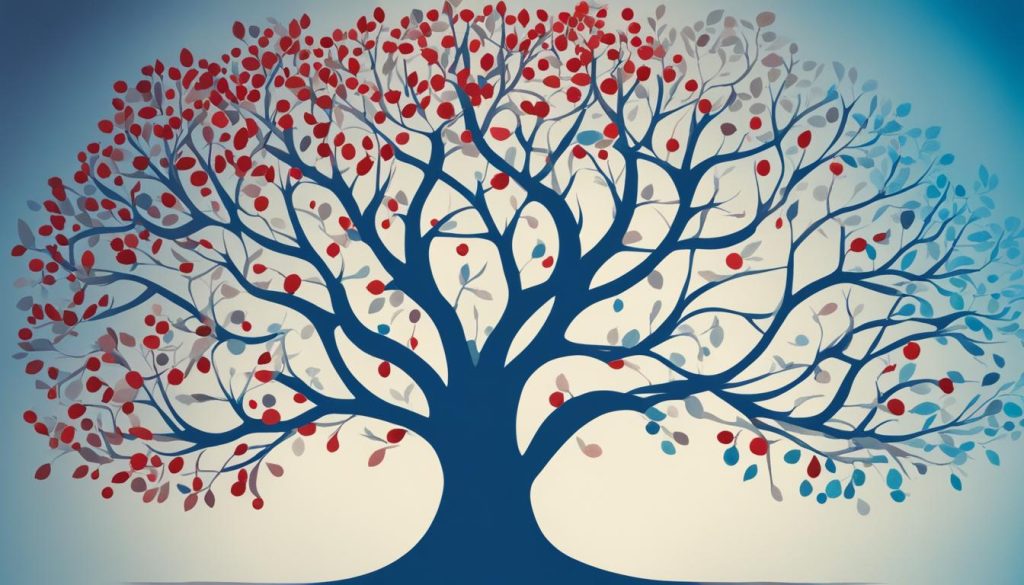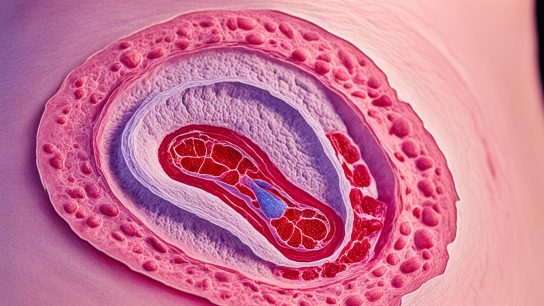Welcome to our informative article on eating disorders. If you’re wondering, how do you know if you have an eating disorder?, we’re here to provide you with essential insights. Eating disorders are complex conditions that require medical and psychological intervention. It’s important to be aware of the signs and symptoms, as early detection and treatment can make a significant difference in recovery.
According to the Diagnostic and Statistical Manual of Mental Disorders, fifth edition, an estimated 28 million Americans have or have had an eating disorder at some point in their life. This staggering statistic highlights the prevalence of the issue and the need for increased awareness.
In this article, we will explore the common types of eating disorders and their symptoms. By understanding the warning signs and taking appropriate action, you can seek the necessary help and support.
Types of Eating Disorders
Understanding eating disorders is crucial in order to recognize potential risks and behaviors associated with these conditions. There are several types of eating disorders, each with its own set of symptoms and challenges. Being aware of these different types can help individuals seek appropriate help and support.
Anorexia Nervosa
Anorexia nervosa is characterized by a severe fear of gaining weight, leading to restrictive eating behaviors and an unhealthy obsession with body weight and shape. People with anorexia may excessively exercise, restrict food intake, and have a distorted body image.
Binge Eating Disorder
Binge eating disorder is characterized by recurring episodes of uncontrollable overeating, during which individuals consume large amounts of food in a short period of time. Feelings of guilt, shame, and loss of control often follow these episodes.
Bulimia Nervosa
Bulimia nervosa is characterized by episodes of binge eating followed by compensatory behaviors such as self-induced vomiting, excessive exercise, or the misuse of laxatives. Individuals with bulimia may have a preoccupation with body shape and weight.
Pica
Pica is characterized by the persistent eating of non-food substances, such as hair, dirt, or paper. This disorder is often associated with deficiencies in certain nutrients and may require medical intervention.
Understanding these different types of eating disorders is crucial in identifying potential risks and seeking appropriate help. If you or someone you know is exhibiting behaviors related to these disorders, it is important to seek professional guidance and support.
| Eating Disorder Types | Main Characteristics |
|---|---|
| Anorexia Nervosa | Severe fear of gaining weight, restrictive eating, distorted body image |
| Binge Eating Disorder | Episodes of uncontrollable overeating, feelings of guilt and loss of control |
| Bulimia Nervosa | Binge eating followed by compensatory behaviors, preoccupation with body shape and weight |
| Pica | Persistent consumption of non-food substances, often associated with nutrient deficiencies |

How Do You Know if You Have an Eating Disorder?
Recognizing the signs and symptoms of eating disorders is crucial in identifying and addressing these complex mental health conditions. If you suspect that you or someone you know may have an eating disorder, it is important to seek a professional diagnosis and appropriate treatment. Here are some common warning signs that may indicate the presence of an eating disorder:
- Dramatic weight loss: Rapid and significant weight loss, especially when combined with restrictive eating patterns, may indicate an eating disorder.
- Concern about eating in public: People with eating disorders often feel uncomfortable or anxious about eating in social settings.
- Preoccupation with weight, food, calories, or dieting: Constant thoughts and discussions about these topics can be a sign of an unhealthy obsession with food and body image.
- Complaints of physical symptoms like constipation or lethargy: Disordered eating habits can lead to various physical issues, such as gastrointestinal problems or decreased energy levels.
- Intense fear of weight gain: An overwhelming fear of gaining weight, even when underweight or at a healthy weight, can be a red flag for an eating disorder.
Additional physical signs may include gastrointestinal symptoms, difficulty concentrating, and dizziness. It’s essential to understand that eating disorders manifest differently in each individual, and not everyone will exhibit all of these symptoms. However, recognizing any combination of these warning signs can be a significant step toward seeking help and getting a proper diagnosis.
If you suspect that you or someone you know may have an eating disorder, consider taking an eating disorder self-assessment or questionnaire to assess the severity and potential presence of these conditions. While these assessments cannot replace a professional diagnosis, they can provide insight and help guide individuals toward seeking appropriate treatment.

Remember, early intervention is crucial in treating eating disorders. If you or someone you know is struggling, reach out to a healthcare provider or mental health professional who specializes in eating disorder diagnosis and treatment. With the right support and treatment, recovery is possible.
Causes of Eating Disorders

The exact cause of eating disorders is still unknown, but experts believe that a combination of genetic, biological, and environmental factors play a significant role.
The Role of Genetic Factors
Research has indicated that there is a genetic component to eating disorders. People with a family history of eating disorders have a higher risk of developing the condition themselves. While specific genes related to eating disorders have not been identified, studies suggest that genetic factors contribute approximately 50-80% to the risk of developing an eating disorder.
Personality Traits and Eating Disorders
Personality traits can also influence the development of eating disorders. Traits like neuroticism, perfectionism, low self-esteem, and impulsivity increase the susceptibility to developing disordered eating behaviors. Individuals with these traits may have difficulty coping with stress, negative emotions, or body image issues, making them more prone to turning to unhealthy eating habits as a way to regain control.
Societal Influences
Societal influences, particularly the pressure to conform to unrealistic beauty standards and media portrayals of ideal bodies, can contribute to the development of eating disorders. In today’s image-focused society, individuals may internalize the belief that thinness equates to beauty, success, and self-worth. This constant exposure to societal expectations can fuel negative body image and self-esteem issues, pushing vulnerable individuals towards disordered eating patterns.
Understanding the various causes of eating disorders is crucial for developing effective prevention and treatment strategies. By addressing genetic, personality, and societal factors, healthcare professionals can work towards creating a holistic approach that promotes positive body image, fosters self-acceptance, and educates individuals about healthy relationships with food.
Conclusion
Eating disorders are serious and often life-threatening conditions that can have a profound impact on an individual’s physical and mental health. However, there is hope for recovery. If you suspect that you may be struggling with an eating disorder, it is crucial to seek help and support.
Seeking help for eating disorders is the first step towards healing. Medical and psychological professionals are trained to understand the complexities of these conditions and provide appropriate treatment options. Therapy, medication, and nutritional counseling are common treatment approaches that can help individuals in their journey towards recovery.
With the right support and treatment, individuals with eating disorders can overcome their struggles and develop healthier relationships with food and their bodies. Recovery is possible, and it is essential to remember that you are not alone in this journey. Reach out to trusted professionals, support groups, or helplines to access the help and resources you need to regain control of your life.




